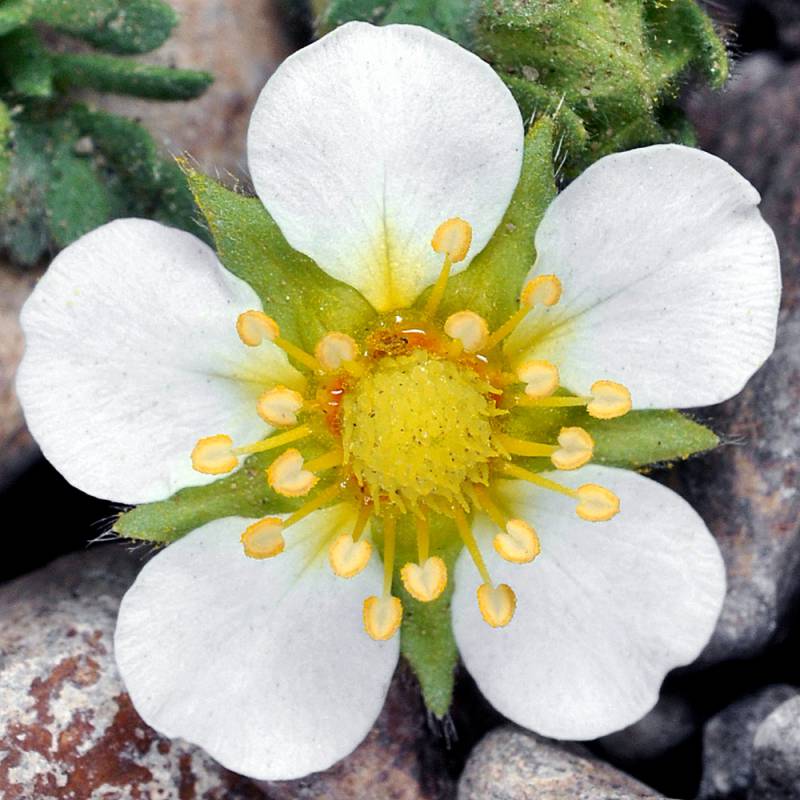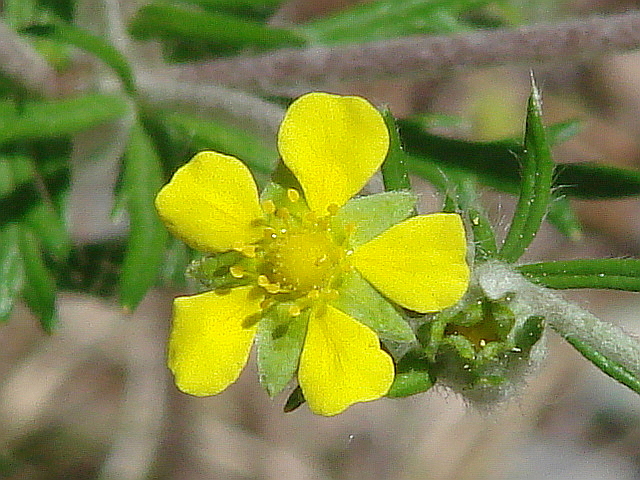Potentilla newberryi
Potentilla argentea
Newberry's cinquefoil
hoary cinquefoil, silver cinquefoil
Leaves mainly cauline, 5-10 per stem, palmately divided, the leaflets 5, 1-2 cm. long, oblanceolate, with coarse serrate teeth over half way to the mid-vein;
stipules lanceolate, entire, 4-8 mm. long.
Inflorescence open, branched, many-flowered, leafy-bracteate;
calyx 4-6 mm. broad, silky, the 5 lobes ovate-lanceolate, 2-3 mm. long, alternating with linear, shorter bracteoles;
petals 5, yellow, obovate with a wedge-shaped base, equaling the sepals;
stamens 20;
pistils numerous, the styles thickened and glandular at the base, tapered upward, attached to the end of the achene.
Achene 0.6-0.8 mm. long, the same length as the style.
Potentilla newberryi
Potentilla argentea
- Local floras:
CA,
OR,
WA
- Local Web sites:
CalFlora,
CalPhotos,
Flora NW,
PNW Herbaria
WildflowerSearch
iNaturalist (observations)
USDA Plants Database
- LBJ Wildflower Center
- SEINet
- Plants of the World Online
- Encyclopedia of Life
- Wikipedia
- Google Image Search
- Local floras:
BC,
OR,
WA
- Local Web sites:
Flora NW,
PNW Herbaria
WildflowerSearch
iNaturalist (observations)
USDA Plants Database
- LBJ Wildflower Center
- SEINet
- Plants of the World Online
- Encyclopedia of Life
- Wikipedia
- Google Image Search



